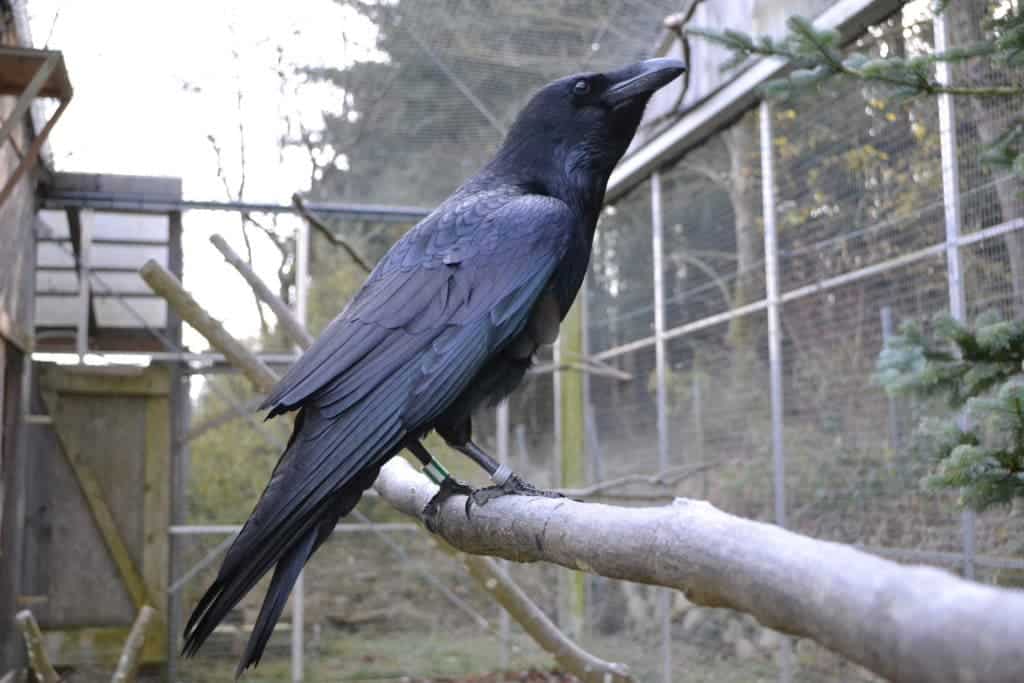
Ravens are some of the smartest creatures in the animal kingdom, so it’s no wonder to hear about studies that attribute human-like qualities to these birds. According to recent research, ravens may develop a bad mood when exposed to sulky peers — a psychological phenomenon which is known as negative emotional contagion.
The mood virus
Humans represent the most complex social species on the planet, having devoted incredibly sophisticated verbal and non-verbal tools to communicate with other people. To make social interactions more efficient, humans have also developed various means of reading the emotions and thoughts of those around us. Such skills can even mean the difference between life and death — which explains the evolutionary pressure that led to their proliferation. For instance, we can instantly judge whether another person is in pain from their facial expression, which tells us both that person is in need of help as well as that danger may be lurking nearby. What’s more, another person’s emotions can be quickly transmitted to us.
Studies have shown that simply looking at a person’s facial expressions causes us to adopt a similar facial expression, most often without even realizing it. So, it seems like our social interactions are underlined by shared emotions interfaced by an unconscious emotional mimicry. To top it all, there’s such a thing as emotional contagion — the process in which one person catches and feels another’s emotional state without realizing that the emotion is not really their own. Examples of this phenomenon include the excitement rising among fans in a football stadium, panic spreading through a crowd, and laughter spreading through an audience.
In a new study, researchers show that emotional contagion may also be present among ravens (Corvus corax). These birds are considered among the most intelligent animals—they can anticipate the future, pull fishing lines out of ice holes, make tools from memory, and imitate wolves in order to attract and entice them to break open a tough carcass for food. Given their superior intellect and keen social behavior, researchers wondered whether ravens also exhibit emotional contagion.
The team designed a series of experiments which gauged negative emotional contagion, which is more plainly evident than positive emotions. The researchers at the University of Vienna and the University of Zurich paired eight ravens for the experiments, where each pair was given a choice between a box containing nothing and one containing cheese (their favorite treat). After the birds learned which box was either empty or filled with cheese, the birds were presented with a third box.
This third box was intended to gauge optimism or pessimism — a type of experiment commonly known as a cognitive bias test. In the last part of the experiment, the birds were separated and then one of them was given either carrots (not their favorite) or dried dog food (which they love). The other raven could only observe how the other mate was behaving but was not allowed to see the food of choice. A cognitive bias test was given again by the researchers.
When the ravens saw their paired mates behaving in a negative way, they took longer to investigate the third box presented to them. This suggests that the bad ‘mood’ was transferred to the observer. Ravens who observed normal behavior also exhibited normal behavior.
Studies such as these might help unravel the origin of this quirky psychological phenomenon as well as broader behaviors such as empathy. Previously, researchers found evidence of emotional contagion among other non-human animals, such as monkeys and dogs.
“This result critically expands upon observational studies of contagious play in ravens, providing experimental evidence that emotional contagion is present not only in mammalian but also in avian species. Importantly, this finding also acts as a stepping stone toward understanding the evolution of empathy, as this essential social skill may have emerged across these taxa in response to similar socioecological challenges,” the authors wrote in the Proceedings of the National Academy of Sciences.






